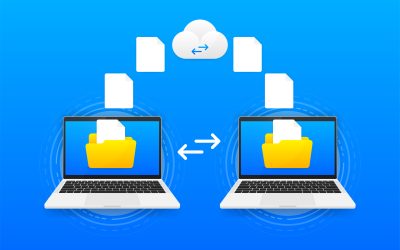Cloud computing is now a necessity. Its cost savings, data security benefits, disaster recovery and service availability are the major factors that persuade organizations worldwide to adopt this technology. While back office outsourcing still has its role to play, businesses that migrate their IT applications and programs to the cloud experience increased productivity, decreased overhead, and fewer IT headaches. Companies that delay cloud migration are the ones losing their competitive edge in the marketplace.
Why Move to the Cloud?
With cloud computing, businesses can enjoy key benefits such as – scalability, where you will also get additional storage space or features; data-security – baseline security profile will be boosted and it improves reaction times to security issues; availability; improves flexibility to work and share files from any preferable location; and Application Programming Interface (API), which ensures compliance and helps with successful integration and inter-operability.
Cloud servers also allow automatic, real-time software updates and upgrades and you can save the cost of hiring computer experts to maintain an onsite server.
Cloud Office Services Market Is Growing
According to Business Industry Reports, the global cloud office services market is expected to grow at an impressive Compound Annual Growth Rate (CAGR) from 2019 to 2023. The major factors boosting market growth are increasing number of connected devices and rapidly growing internet penetration. Cloud office can assist enterprises by connecting the employees and providing storage, file sharing and communication solutions.
Tips for Cloud Migration
- Maintain a migration checklist to help your team know what they need to do in order to start migrating
- Build a solid business case to measure effectiveness and success of migrating to the cloud, like how it affects the bottom line and profitability of your organization
- Have a clear idea about what your firm seeks to accomplish by moving to the cloud, this helps to design your migration strategy
- Make sure the cloud system is equipped with the necessary encryption technology to keep your data secure
- Know which process to begin migration with and choose the right kind of cloud platform to suit your business operations and IT requirements
- To keep the migration moving along you must effectively communicate with your teams to keep them informed, engaged and enthused to support the process.
- Consider using tools like managed service providers (MSPs) or cloud management platforms (CMPs) to plan out a cloud migration step by step and plot out a timeline for your migration.
- Start the migration process first with small user groups, as this will help to rule out any issues along the way while also causing minimal business disruption.
- First migrate any non-essential data, so that if something goes wrong, it will not be that costly to your business.
- Be flexible to change or redesign certain aspects of your plan. Maintaining operational capability is as important as functional capability.
- Provide structured training for your staff before and after the migration, as this keeps everyone in the same direction along with maintaining efficiency and productivity.
- Provide high levels of access to migrate to the cloud while ensuring data security and making sure only those who are authorized see confidential data.
- Manage the whole process from planning to implementation and completion and evaluate your cloud migration strategy and check whether it is working to achieve your company’s cloud goals.
Ensure that your entire IT team is well aware about all your migration strategies so that they work together to meet your cloud goals.
In our next blog, we will discuss the potential risks related to cloud migration.




